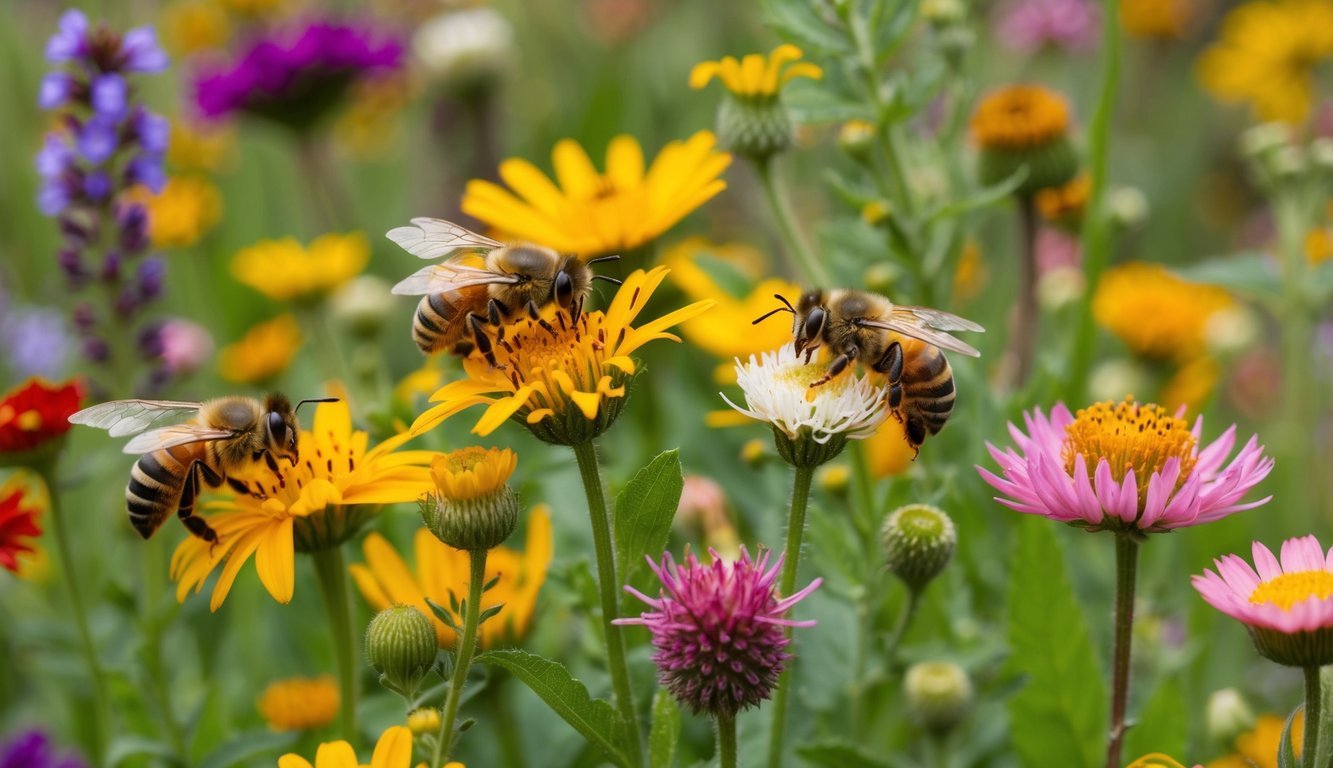
A new study from Penn State, recently published in PNAS Nexus, sheds light on the foraging behaviors of different bee species, revealing their unique preferences when seeking food from flowers.
The research focuses on two solitary bee types: the horned-face bee, which plays a vital role in pollinating crops like apples and blueberries, and the alfalfa leafcutting bee, primarily responsible for alfalfa pollination.
Foraging Preferences of Different Bees
The research findings highlight intriguing differences between these bees.
Horned-face bees tend to favor plants that boast a high number of flowers, indicating that quantity takes precedence for them.
In contrast, alfalfa leafcutting bees are more discerning, opting for flowers based on their nutritional value, especially prioritizing those with a favorable protein-to-fat ratio.
Jaya Sravanthi Mokkapati, the lead author and a postdoctoral researcher at Penn State’s College of Agricultural Sciences and the Center for Pollinator Research, emphasizes the significance of understanding the foraging patterns of various bee species.
Such knowledge could greatly enhance conservation efforts, offering a clearer picture of the evolutionary relationship between plants and their pollinators.
Mokkapati also stresses the need to explore the seasonal foraging habits of these bees to fully appreciate their contributions to pollination and plant reproduction.
The Role of Pollinators in Ecosystems
The study underscores a time-honored, mutually beneficial bond between pollinators and flowering plants that has flourished over millennia.
As bees visit flowers for nectar and pollen, they play an essential role in plant reproduction by spreading pollen.
This critical interaction is paramount for food security since many crops rely on pollinators for the production of fruits, vegetables, and nuts.
However, the situation for pollinators is concerning; many species are experiencing drastic declines, mainly due to habitat loss.
Christina Grozinger, the co-author and the Publius Vergilius Maro Professor of Entomology at Penn State, points out that understanding which floral traits attract these bees is vital in restoring their habitats.
She notes that factors like color, scent, size, number, and nutritional content all influence bee preferences.
Yet, the complex evolution of these floral traits makes it challenging to pinpoint the specific features that attract each bee species.
Implications for Habitat Restoration
In their research approach, scientists teamed up with experts from the Swedish University of Agricultural Sciences to create 20 unique plant genetic lines by crossbreeding the self-pollinating Capsella rubella with the pollinator-dependent C. grandiflora.
By manipulating floral traits related to quantity and nutritional quality, they could assess how these changes impacted the bees’ attraction to various flowers.
The differing foraging behaviors of the horned-face and alfalfa leafcutting bees appear to correlate with the availability of resources.
For instance, the spring-active horned-face bees face limited food options, leading them to seek out a greater number of flowers.
Meanwhile, the alfalfa leafcutting bees, which forage in the more bountiful summer months, can prioritize nutrient-rich flowers over sheer abundance.
This research offers valuable insights for habitat restoration efforts aimed at supporting pollinator populations.
Landscape managers might consider planting a diverse range of flowers that cater to the needs of different bee species, ensuring a continuous supply of appealing and nutritious food sources throughout the growing season—benefiting both the bee populations and ecosystem health.
Mokkapati also highlights the importance of public awareness in fostering a better understanding of various bee species’ specific needs.
Educating community members about how native plant gardens can provide vital resources could encourage local initiatives aimed at creating pollinator-friendly environments.
Such collaborative efforts are likely to boost biodiversity and enhance ecological balance, while also contributing to the beauty of local landscapes.
Looking to the future, the researchers propose that subsequent studies might explore the diverse foraging strategies among bee species, especially their sensory and cognitive processes, as well as the evolutionary factors shaping these behaviors.
Engaging with these complex dynamics could yield further understanding of the intricate relationships within our ecosystem.
Source: ScienceDaily

